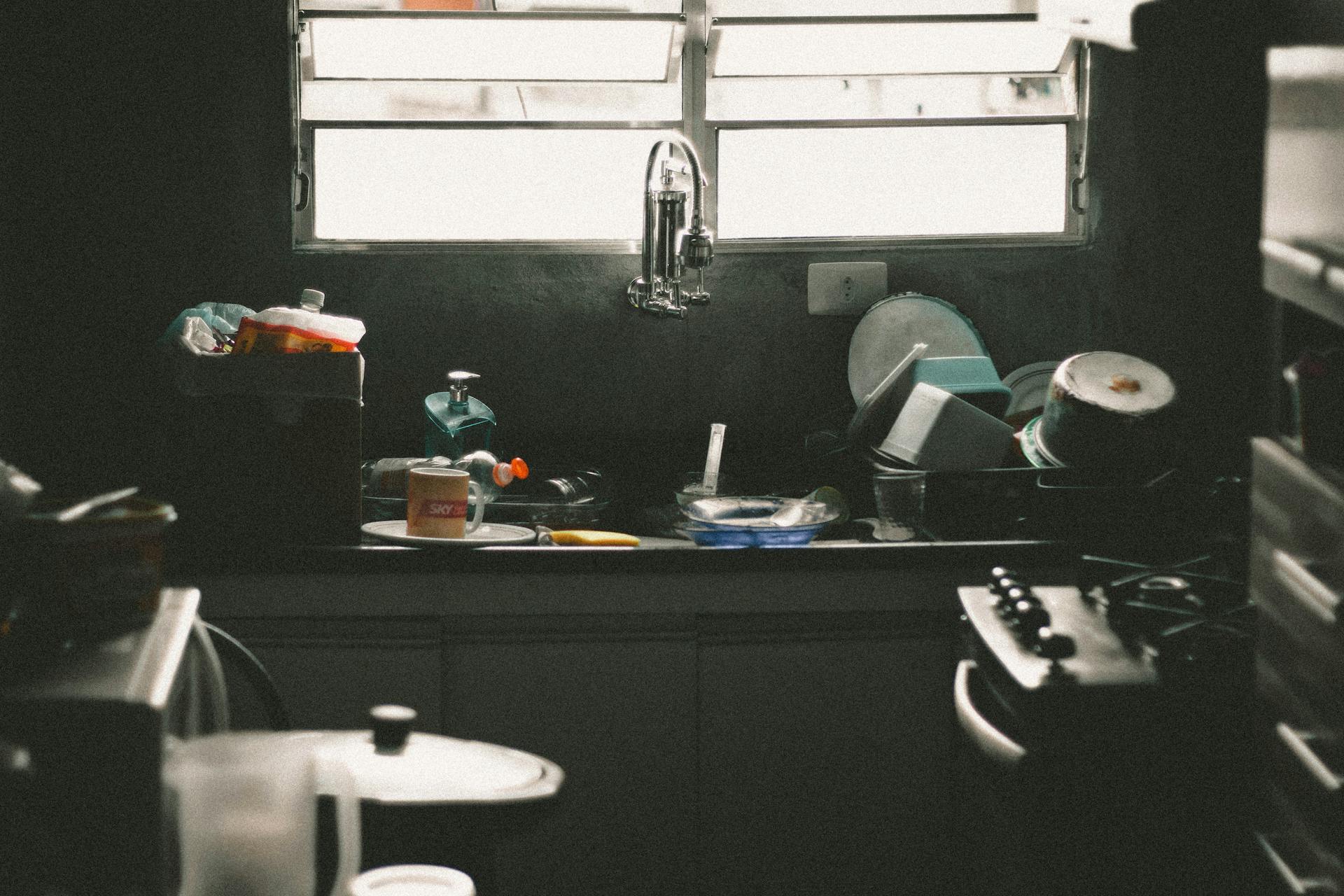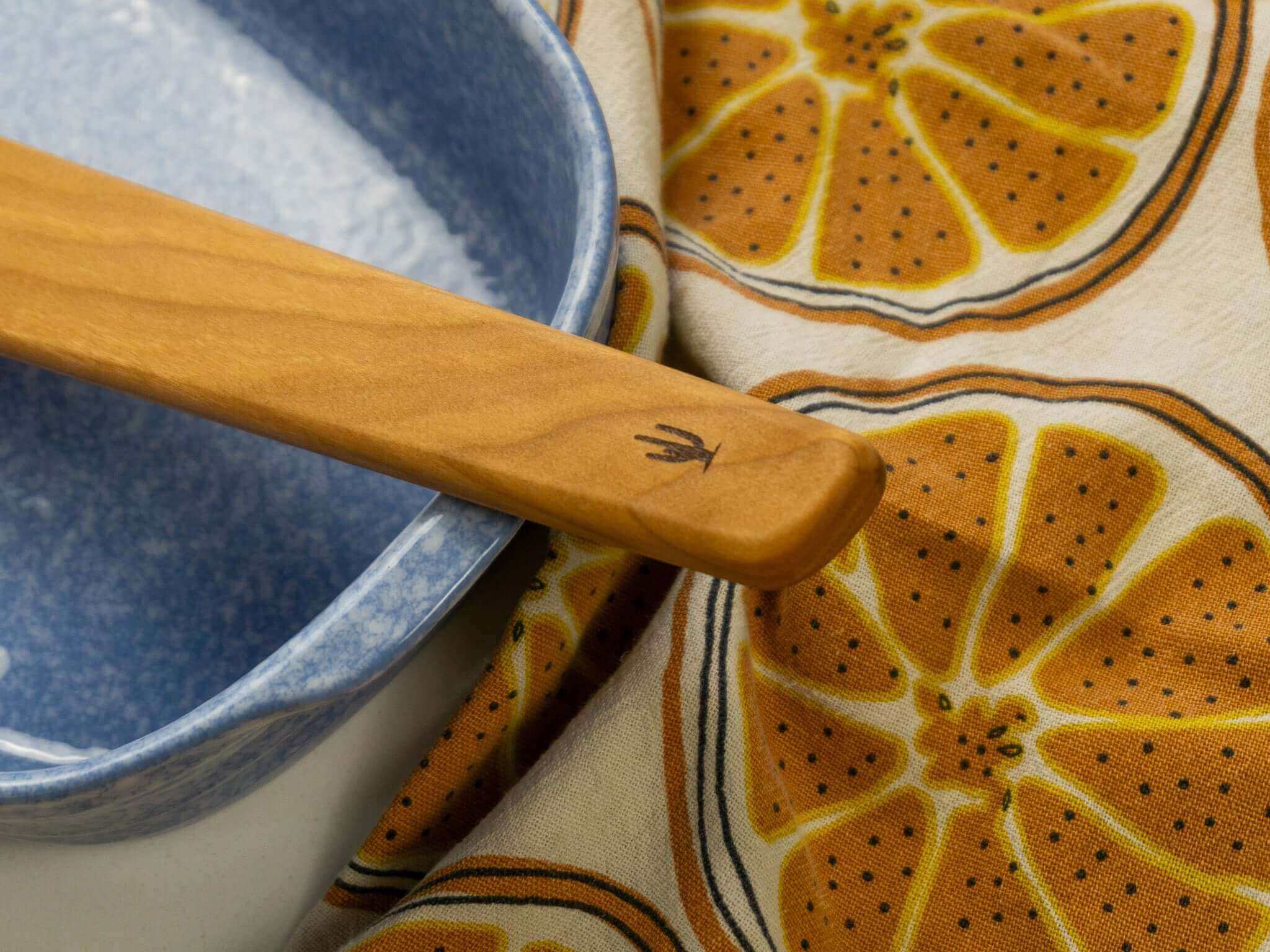When My Kitchen Became a Holiday Disaster Zone
It's 6 AM on Thanksgiving morning, 2019. I'm standing in my kitchen, coffee in hand, staring at what can only be described as a complete disaster. I've got a 20-pound turkey that needs to go in the oven, three different side dishes in various stages of prep, and somehow my kitchen drawers have turned into a tangled mess of utensils that seem determined to hide every tool I need.
Sound familiar? That morning taught me something important: I wasn't failing at cooking—I was failing at organization. And after that holiday nightmare, I decided to figure out how the professionals actually handle high-pressure, multi-dish cooking without losing their minds.
What I discovered changed everything about how Zach and I approach not just our own holiday cooking, but how we think about the wooden organizers we craft for fellow home cooks.
The Professional Reality Check
Here's what I learned from studying professional kitchens, certified organizers, and master chefs like Thomas Keller: 90% of holiday cooking failures have nothing to do with your cooking skills. They're organizational failures.
Think about it—when's the last time you ruined a turkey because you couldn't roast? Probably never. But how many times have you been scrambling through drawers looking for a carving knife while your perfectly cooked bird sits getting cold? That's the real problem.
Professional chefs don't succeed because they're magically better at cooking under pressure. They succeed because they've built systems that work when everything gets crazy. And after diving deep into their methods, I realized we could adapt these same principles for home kitchens.
What Certified Professional Organizers Actually Do
I spent time researching how Certified Professional Organizers approach holiday kitchen prep, and their methods are surprisingly systematic. These aren't just people with good Pinterest boards—they're professionals with 1,500+ verified hours of experience who've seen every possible kitchen disaster.
Here's their real protocol, and why it works:
The Complete System Reset (Early October)
Professional organizers start with what they call "complete system evacuation." Sounds dramatic, but it's actually brilliant. You pull everything out—pantry, fridge, every drawer—and lay it all out where you can see it.
I tried a version of this in my own kitchen, and it was eye-opening. That collection of takeout menus living in my utensil drawer? The expired spices taking up prime real estate? The three different spatulas I didn't even know I had? All of it became obvious when everything was out in the open.
The professionals are ruthless about this: if you haven't used something in the past year, it gets donated before the holiday rush hits. This isn't about being minimal—it's about making room for the tools that actually earn their keep during holiday cooking.
Zone-Based Storage That Actually Works
Here's where most organization advice gets it wrong—it tells you to group "like with like." But professional organizers organize by workflow, not category. They create what they call functional zones based on how you actually move through cooking tasks.
For holiday cooking, this means:
Command Center Zone: Your most-used tools within arm's reach of your main prep area. This is where your good knives, wooden spoons, and measuring tools live. These get accessed constantly during any cooking session.
Holiday Specialty Zone: Tools you use multiple times during holiday meal prep but not daily. Carving sets, roasting forks, gravy whisks, good serving pieces that actually see action.
Reserve Zone: Backup tools and "just in case" items in less prime real estate, but still logically organized.
The key insight: during holiday cooking, you need different accessibility than everyday cooking. Your everyday setup might work fine for Tuesday night dinner, but Thanksgiving morning requires a completely different tool hierarchy.
Learning from Master Chefs: Thomas Keller's "Sense of Urgency"
Thomas Keller, the chef behind The French Laundry, taught me something that completely changed my approach to holiday cooking. He talks about working with "a sense of urgency"—but not the kind of frantic rushing that leads to mistakes.
Keller's urgency is about finishing tasks ahead of schedule so you have time to think, adjust, and handle the unexpected. In holiday cooking terms, this means if you think carving the turkey will take 10 minutes, plan for 20. Use that extra time to check on your sides, adjust seasoning, or just breathe.
Here's how this translates to organization: every tool needs to be exactly where your hands expect it to be, without thinking. When you're juggling multiple dishes and timing is critical, you can't afford to waste mental energy hunting for a whisk.
This is why we obsess over every detail in our wooden organizers—the way each slot is sized exactly for its tool, how the compartments flow logically from one to the next. When the pressure's on, your organization system needs to work instinctively.
Jacques Pépin's Mise en Place Philosophy
Jacques Pépin taught me that proper mise en place isn't just about chopping vegetables—it's about setting up systems that prevent chaos. His approach: "If you prepare properly, cooking becomes a joy instead of a struggle."
For holiday kitchens, this means:
Complete ingredient prep before any cooking starts. Not just chopping—everything measured, organized, and ready to go.
Tool staging in order of use. Your carving knife doesn't belong buried in a drawer; it belongs staged next to where you'll be carving.
Workspace preparation that accounts for multiple dishes. You need landing spots for hot pans, staging areas for finished dishes, and clear pathways that don't cross each other.
The professionals also taught me about "timing buffers"—building extra time into every step so small delays don't create cascading disasters. This only works if your tools are organized well enough that you're not constantly searching for what you need.
The Science Behind Holiday Kitchen Failures
Research from culinary schools reveals that most holiday cooking disasters follow predictable patterns:
Timing failures when managing multiple dishes happen because people don't account for the extra time that disorganization adds to every task. If finding your tools adds 30 seconds to each step, that compounds into serious timing problems across a complex meal.
Mise en place violations create cascading chaos. When you're chopping vegetables in the middle of cooking because you didn't prep properly, or stopping to search for tools during critical cooking moments, everything falls apart.
Workspace confusion happens when your holiday setup doesn't account for the reality of cooking multiple dishes simultaneously. Your everyday organization might work fine for one pot of pasta, but completely fail when you're managing turkey, three sides, and dessert timing.
The solution isn't just working harder—it's building systems that work under pressure.
The Professional Holiday Strategy I Actually Use
After learning from the pros, here's the system I now use in my own kitchen, and it's transformed our holiday cooking:
What I Actually Changed After Learning from the Pros
Look, I'm not going to pretend I've turned into some perfectly organized chef who follows elaborate protocols. But understanding how professionals think about these problems completely changed my approach.
Three weeks before now: I actually look at what's in my drawers and ask tough questions. Do I really need three different spatulas when one good one would work better? That fancy gadget that's a pain to clean—is it actually helping or just taking up space that better tools could use?
Two weeks before: Instead of just cramming holiday tools wherever they fit, I think about workflow. Where will I actually be when I need the carving knife? What makes sense to have within easy reach when I'm juggling multiple dishes?
The week of: I'll be honest—I don't create elaborate timing maps like restaurant chefs. But I do think through the actual sequence of what I'm doing, and I've learned to build in buffer time because things always take longer than I think they will.
Day of cooking: The biggest change is that I actually prep everything I can ahead of time instead of trying to chop vegetables while monitoring three different pots. And I stage tools where they make sense for the tasks ahead instead of just hoping I'll find everything when I need it.
I'm not perfect at this—I still sometimes find myself hunting for the right spoon while something's about to boil over. But understanding how professionals think about workflow has made a real difference in how stressful (or not) holiday cooking feels.
Why Your Drawers Make or Break Holiday Cooking
Here's something I learned from both professional organizers and master chefs: the moments when you most need your tools to cooperate are exactly when poorly organized storage causes the most damage.
When you're timing multiple dishes and managing kitchen chaos, fumbling through a tangled drawer isn't just annoying—it breaks your rhythm and throws off your timing. Professional kitchens succeed because every tool has an obvious, logical home that works even under pressure.
This is why every custom organizer we craft considers these high-pressure moments. The smooth-sliding compartments, precisely sized slots, and logical flow from tool to tool—these aren't just nice details. They're specifically designed for those critical moments when everything needs to work perfectly.
The Arizona Lesson: Systems That Work Under Stress
Living and cooking in Arizona has taught me something valuable about organization: systems that work under extreme conditions are the ones that really matter. When it's 115°F outside and you're trying to cook a holiday meal without heating up the house too much, every second of efficiency counts.
That's the same principle that applies to holiday cooking anywhere: your organization system needs to work when the pressure's on, timing is critical, and you can't afford to waste time hunting for tools.
The best professional kitchens aren't the ones with the most expensive equipment—they're the ones where everything works together seamlessly, even during the craziest service rushes.
Making It Work for Your Holiday Cooking Style
The best part about learning from professionals is understanding that good organization isn't one-size-fits-all—it's built around how you actually cook.
Do you prep everything in advance, or are you more of a last-minute improviser? Do you cook solo, or is your kitchen full of helpful family members? Are you the type who uses every burner and oven rack, or do you prefer simpler approaches?
The professionals taught me to start with honest assessment of my own cooking style, then build organization systems that support that reality rather than fighting against it.
This is why thinking about how different people actually cook has become so important to how we approach our work. Because the most beautiful organization in the world doesn't matter if it doesn't support the way you really move through your kitchen.
Your Holiday Transformation
Imagine opening your drawer on holiday morning and finding exactly what you need, exactly where you expect it. No digging, no frustration, no breaking your cooking rhythm. Just smooth, efficient movement from tool to task, letting you focus on what really matters: creating delicious food and joyful memories.
That's not just a nice dream—it's entirely achievable with organization systems that actually work under pressure.
The difference between a stressful holiday cooking experience and a joyful one often comes down to whether your kitchen works with you or against you when you need it most. And after learning from professional chefs, certified organizers, and kitchen design experts, I'm convinced that thoughtful organization is what makes the real difference.
Whether you're working with the drawers you have or considering custom solutions that fit your exact needs and cooking style, the key is creating systems that serve your real cooking life—especially when the stakes are highest and the pressure's on.
Because the best holiday meals don't come from perfect kitchens—they come from kitchens that work perfectly for the people cooking in them.






Share:
The Essential Three: Why These Wooden Utensils Will Transform Your Cooking
Choosing Your Wood: Walnut, Cherry, or Maple